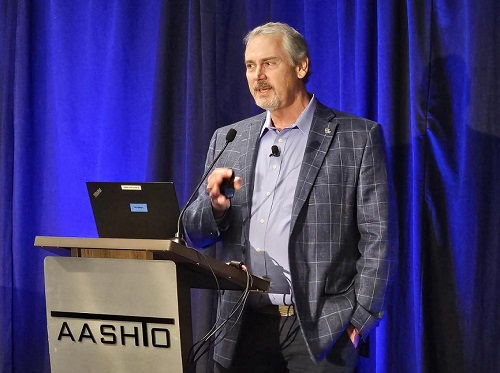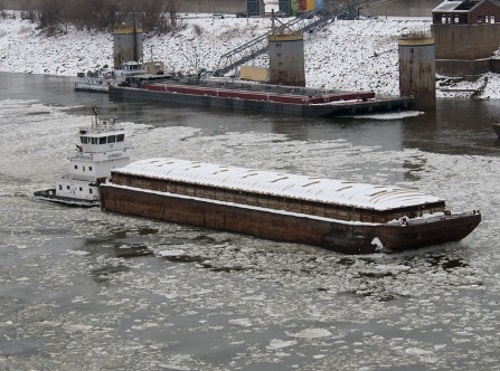The Maritime Administration or MARAD – part of the U.S. Department of Transportation – recently designated a new marine highway route, two new marine highway projects, and one project extension as part of the America’s Marine Highway Program or AMHP.
[Above photo by the Missouri DOT]
In a statement, MARAD said those initiatives affect eight states: Illinois, Michigan, Wisconsin, Alaska, Hawaii, Washington, California, and Oregon will receive new routes, designations, or extensions. The specifics of those awards are as follows:
- M-3 Kaskaskia River (Illinois): The Kaskaskia River is the second-longest river in Illinois, originating in central Illinois around Champaign and terminating at its confluence with the Mississippi River – a distance of more than 300 miles. Its designation as a marine highway route included the existing freight traffic between the terminals on the Kaskaskia River and the Mississippi River, which, in turn, opens new opportunities to leverage private investment through public and private partnerships and support supply chain resiliency efforts.
- Lake Michigan M-90 Marine Highway Shortcut (Michigan and Wisconsin): This project designation supports an existing ferry service that transports both freight vehicles and passengers across Lake Michigan between Ludington, Michigan, and Manitowoc, Wisconsin – allowing vehicles to avoid travel around the extremely busy southern route near Chicago.
- Northwest Connect: This project designation affects the M-5 Marine Highway Route transporting containerized freight to and from Alaska, Hawaii, and Washington.
- M-5 Coastal Connector (Oregon): This project extension affects the Port of San Diego; an original project applicant for the M-5 Coastal Connector Project, which received its AMHP designation in 2021. The original designation was for the planned service to transport goods on barges between Washington, Southern Oregon, and San Diego. The Port of San Diego requested an extension to the project designation to the Port of Umpqua in Oregon.
In March, MARAD made nearly $25 million in grant funding available for the AMHP from the $1.2 trillion Infrastructure Investment and Jobs Act or IIJA enacted in November 2021.
The agency added that the AMHP supports the increased use of the nation’s navigable waterways to relieve landside congestion, provide new and efficient transportation options, and increase the productivity of the surface transportation system. By working closely with public and private organizations, the AMHP helps create and sustain American jobs in U.S. ports, on vessels, and at shipyards, while simultaneously improving the nation’s supply chains.
Since its inception in 2010, the AMHP has designated 54 marine highway projects, which is a planned service, or expansion of an existing service, on a designated marine highway route. A marine highway route is a navigable waterway, capable of transporting freight, located in the United States or its territories, MARAD added.
 Nation
Nation
IIHS’s Harkey Talks Sustainable Road Safety at Summit
October 18, 2024 Nation
Nation

